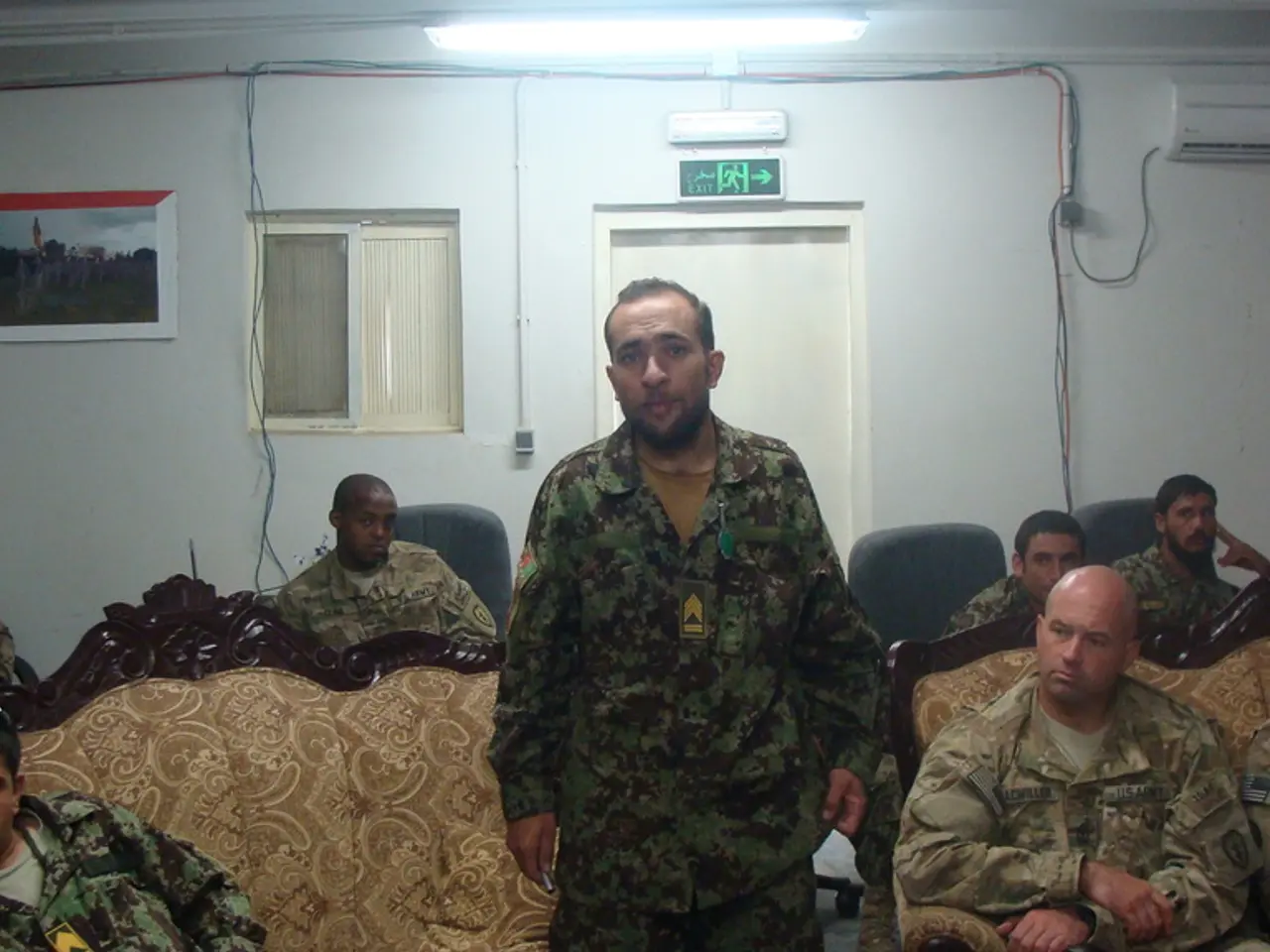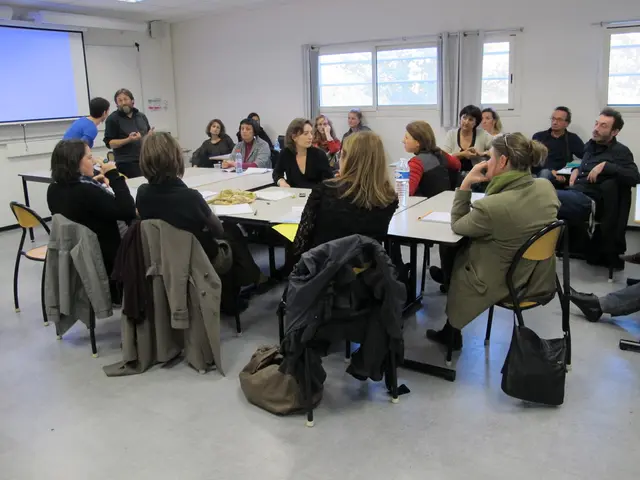Unity or Division: The Debate between Incorporation and Preservation, and the Struggle of Labeling the Other
In the rapidly advancing world of technology, the need for civilians with technical skills in fields such as space, cyber, medical, and logistics has never been greater. This is particularly true within the Defense Intelligence Agency (DIA), where the workforce is split between 74% civilians and 26% military members.
However, the integration of civilians into military organizations is not without its challenges. One such challenge is the cultural phenomenon of "othering," a less discussed reason for the failure of civilian workforce integration. This occurs when military personnel perceive civilian personnel as outsiders within their culture.
The Defense Business Board's 2022 report found that civilian development is not seen as a priority within the DoD culture. This, coupled with the fact that fewer Americans are eligible to serve in the military, makes the augmentation of the workforce with civilians a mission-critical requirement.
Experts are raising concerns over the relationship between military and civilian leadership, and a nationwide decrease in trust in the military has been observed. To address these issues, a shift is recommended, not organizational or policy-oriented, but cognitive. The first step for the military to improve integration is to shift its mindset to push junior leaders to integrate, not assimilate, civilians into workplaces.
Strategies for improving civilian integration include fostering mutual understanding through joint training and exercises, enhancing communication channels between civilian and military personnel, and promoting inclusive leadership that bridges cultural divides. Initiatives like the Army Transformation Initiative (ATI) and European defense efforts emphasize these approaches to reduce institutional separations and promote integration of defense technology and personnel.
Addressing "othering" requires deliberate efforts to create shared identity and mutual respect. This can be achieved by increasing civilian personnel’s exposure to military environments, encouraging cultural competency training across both groups, and establishing formal liaison roles to facilitate collaboration. Leadership plays a critical role in modeling inclusive behaviors that value the unique contributions of civilian expertise to military objectives.
The Department of Defense (DoD) employs approximately 890,000 civilians, making it the fourth largest employer of civilians in the world. However, a loss of recruitment for civilians or military due to othering creates a national security dilemma. The talent deficit posed by this issue is the most significant challenge to enabling technological dominance, according to a 2021 report by the National Security Commission on Artificial Intelligence.
The Defense Logistics Agency, with 24,000 civilians and 800 military personnel, prioritizes workforce and culture integration through detailed strategic planning. Surveys indicate that Generation Z prioritizes personal well-being, work-life balance, and diversity when considering employment. Only one service, the Marine Corps, expects to meet its recruiting goals in 2023.
Recent Reddit discussions reveal vocal animosity from some military members towards DoD civilians, indicating dysfunction within the workforce. A lack of understanding between military and civilian communities can crystallize into deeply entrenched negative perceptions toward the other side.
In summary, effective strategies for improving civilian integration involve structural integration through joint activities, cultural initiatives fostering inclusion and mutual respect, leadership commitment to inclusive practices, and institutional policies that align civilian and military goals and operations. By addressing the phenomenon of "othering" in military formations, we can create a more cohesive and effective workforce, ensuring the continued success of our national security efforts.
- The Defense Business Board's 2022 report highlights the need for a shift in mindset among military leaders, encouraging integration rather than assimilation of civilians.
- Experts suggest fostering mutual understanding through joint training and exercises, enhancing communication channels, and promoting inclusive leadership as strategies for improving civilian integration.
- The Talent deficit posed by a lack of civilian and military recruitment due to "othering" is the most significant challenge to enabling technological dominance, according to a 2021 report by the National Security Commission on Artificial Intelligence.
- The Defense Logistics Agency prioritizes workforce and culture integration through strategic planning, acknowledging the preferences of Gen Z for personal well-being, work-life balance, and diversity in employment.
- A lack of understanding between military and civilian communities can lead to deeply entrenched negative perceptions towards the other side, as evident in recent Reddit discussions.
- To create a more cohesive and effective workforce, we need effective strategies such as structural integration, cultural initiatives fostering inclusion and mutual respect, leadership commitment to inclusive practices, and institutional policies that align civilian and military goals and operations, addressing the phenomenon of "othering" in military formations.




